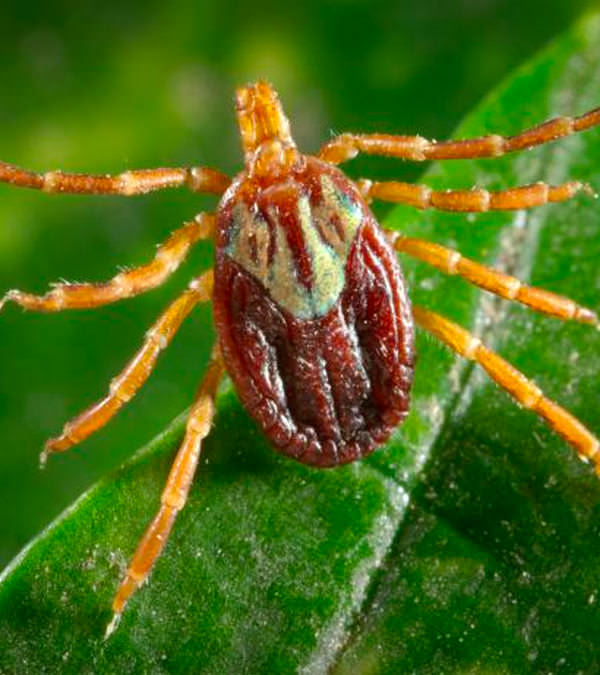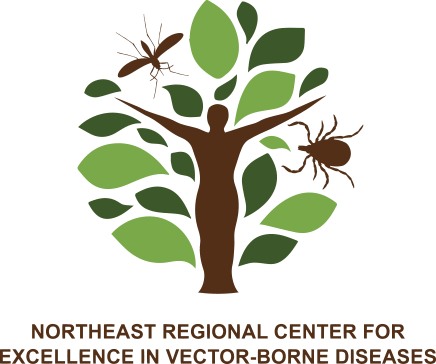Gulf Coast Tick Amblyomma maculatum
The Gulf Coast tick lives in coastal areas along the Atlantic Ocean and Gulf of Mexico, with a range expanding to the north. Gulf Coast ticks are able to transmit pathogens to humans and pets, in addition to being a pest for ruminants.
Gulf Coast Tick Map / Habitat
The Gulf Coast tick is common in the Southeast USA, but can also be found in Virginia, Maryland, and Delaware and may be expanding its range northward. In fact, established populations of tick were recently documented as far north as Connecticut.
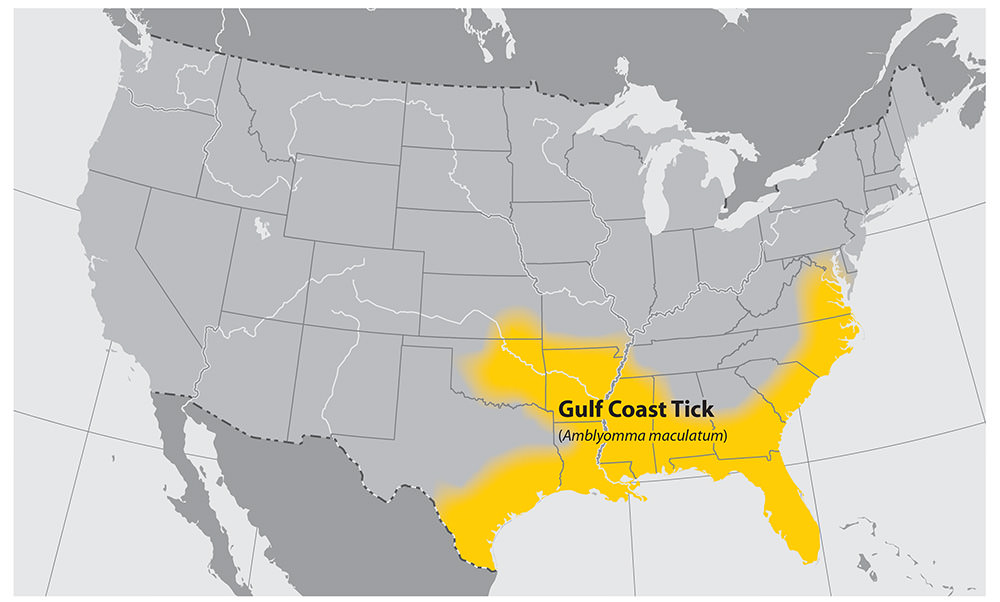
Visit the CDC website for the most up to date map.
Gulf Coast Tick Habitat:
The Gulf Coast tick lives in coastal areas along the Atlantic Ocean and Gulf of Mexico. These ticks are often found in grass prairies and coastal uplands, like coastal banks, dunes, and sea cliffs. The following image is an example of where you might find Gulf Coast tick:
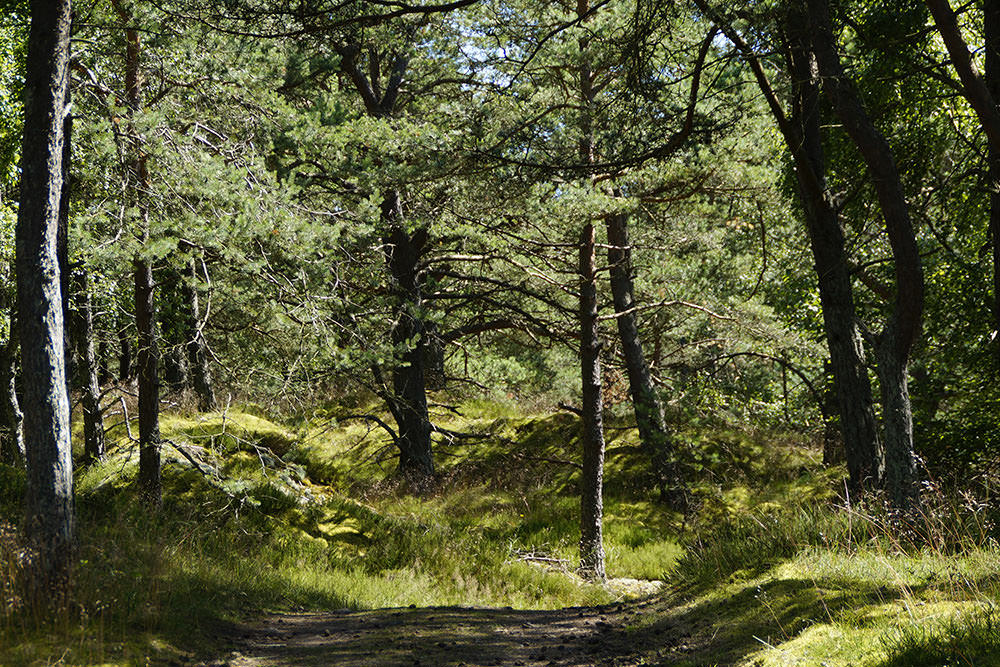
Diseases They Can Carry
The Gulf Coast tick can transmit Rickettsia parkeri, which causes a spotted fever rickettsiosis in humans. Spotted fever group rickettsioses (spotted fevers) are a group of diseases caused by closely related bacteria. Learn more about the spotted fever group rickettsioses by visiting the CDC at https://www.cdc.gov/otherspottedfever/.
Gulf Coast ticks can also cause American canine hepatozoonsis. Dogs can become infected when they eat a tick infected with the protozoan Hepatozoon americanum during grooming. [www.ncbi.nlm.nih.gov/pmc/articles/PMC207105/]
Biology and Feeding Habits
1.) Gulf Coast ticks are a 3-host tick
- Gulf Coast ticks have 3 blood feeding life stages: larva, nymph, and adult. These ticks are considered a 3-host tick, meaning that one tick will feed from a different host at each of these three life stages, dropping off hosts between feedings.
- Gulf Coast ticks feed for 8 to 10 days, depending on life stage.
- Visit TickEncounter.org to see more images of this tick at different life stages.
2.) In the Southeast, Gulf Coast ticks can be active year-round.
- Adult Gulf Coast ticks are typically active from spring to late fall in the Southeastern USA, while nymphs and larvae are more active in winter months. This means that in the Southeast, Gulf Coast ticks can be active year-round.
- The activity of these ticks may be different in more northern regions of the USA.
3.) Gulf Coast ticks feed on a variety of mammal and bird hosts.
- Gulf Coast ticks have been collected from 71 mammal and bird hosts in the US.
- Gulf Coast tick larvae and nymphs tend to feed on small animals, and may prefer particular birds as their primary hosts for a blood meal.
- Adult Gulf Coast ticks are more likely to feed on larger animals, including deer, cattle, sheep, horses, dogs, and humans.
- On wild hosts, larvae and nymphs tend to be found around the neck and head, while adults often feed on the hosts’ ears.
References
- Hertz Jeffrey C and Philip E Kaufman. Featured Creatures: Gulf Coast Tick. Entomology and Nematology Department, University of Florida. Publication Number: EENY-603. Available at: entnemdept.ifas.ufl.edu/creatures/URBAN/MEDICAL/Gulf_coast_tick.htm
- Centers for Disease Control and Prevention. Regions Where Ticks Live. Available at: www.cdc.gov/ticks/geographic_distribution.html
- TickEncounter Resource Center. Ticks by Species. University of Rhode Island. Available at: web.uri.edu/tickencounter/fieldguide/ticks-by-species/
- Nicholson W., Somenshine D., Noden B., Brown R. 2019. Chapter 27 - Ticks (Ixodida). Medical and Veterinary Entomology. 3rd Edition. pg 603-672. doi.org/10.1016/B978-0-12-814043-7.00027-3
- Molaei G, Little EAH, Khalil N, Ayres BN, Nicholson WL, Paddock CD. 2021. Established Population of the Gulf Coast Tick, Amblyomma maculatum (Acari: Ixodidae), Infected with Rickettsia parkeri (Rickettsiales: Rickettsiaceae), in Connecticut. Journal of Medical Entomology. 58(3):1459-62. DOI: 10.1093/jme/tjaa299
The TickApp
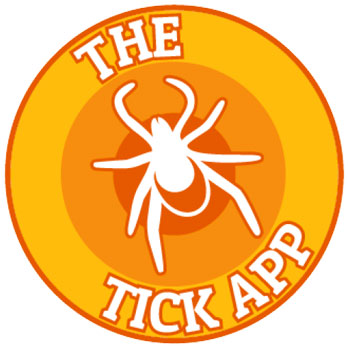
The TickApp is a free smartphone app that offers tick identification resources in the Northeast and Midwest USA. It was developed as a Citizen Science Project from our partners at Columbia University!
